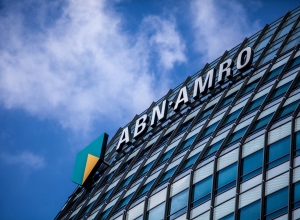ABN Amro premium clears Greek blockage
ABN Amro unblocked the primary market for subordinated bank debt on 23 June with a Eu1.5bn Tier 2 issue that attracted some Eu8bn of orders, raising hopes that a heavy pipeline of delayed AT1 and Tier 2 projects might be possible — if issuers are willing to accept that the market is requiring substantial new issue premiums to reflect the higher volatility and uncertainty.
The Dutch bank’s transaction was the first in almost a fortnight as the latest pronounced bout of volatility, on the back of rising Bund yields and Greek fears, had stymied issuance. However, it was followed by subordinated deals in euros and sterling from HSBC Holdings and The Co-operative Bank, respectively, as well as further FIG supply.
The reopening came after hopes of a resolution to the Greek crisis rose early in the week. Although these were dashed and the odds on Grexit rose as negotiations in Brussels reached an impasse, the Dutch bank’s strategy of offering initial price thoughts with an enticing new issue premium of as much as 50bp showed that even the most fraught market conditions could perhaps be overcome.
Leads ABN Amro, Bank of America Merrill Lynch, Deutsche Bank, Morgan Stanley and UBS went out on the Tuesday morning with IPTs of the mid-swaps plus 250bp area for the 10 year non-call five issue, which bankers said implied a NIP of 40bp-50bp. After taking some Eu8bn of orders, the leads were ultimately able to price the Eu1.5bn deal at mid-swaps plus 235bp, equivalent to a NIP of up to 35bp.
“The Eu8bn of demand for ABN Amro’s Tier 2 showed that deals can get done,” said a syndicate official at one of the leads.
“Encouraged by Monday’s Greek deal prospect headlines, a huge rally across stocks and bonds, plus a decent new issue premium, investors opened their wallets to take out some of the piled up money that is waiting to be used for something after weeks of low supply, rates volatility and Greek uncertainty.”
Daniëlle Boerendans, head of long term funding and capital issuance at ABN Amro Bank, said that the bank had received regulatory approval for the transaction at the beginning of the month and then monitored the market for an appropriate execution window.
“The market was closed for quite some time and when we saw the tone in credit and equities improve on Monday we were keen to take advantage of the window,” she said. “Like everyone else, we were also aware of the pipeline and summer is coming up, too.
“Given that we have a well-established name in the capital markets, including the euro subordinated space, we thought that it would work if ABN Amro would reopen the market. That turned out to be quite a success if you look at the order book of Eu8bn and the ability to upsize to Eu1.5bn and tighten pricing.”
ABN Amro’s tightening from IPTs to re-offer contrasted with comparable supply in the previous flurry of FIG issuance two weeks earlier, when several issuers remained stuck at IPTs on the back of weak order books.
“We saw some trades that struggled to achieve their ambitions,” said Boerendans, “so together with the joint leads, we decided that this was probably the best strategy and then to take it from there. In these kinds of markets, you should really choose the right execution strategy, that is to get investors’ attention and I think that ours was the correct approach.
“For us, it was all about the execution risk, and balancing size and price within the market context,” she added. “Price is always important, but maybe the new issue premiums we are talking about are the new reality.”
And with the outlook for Greece worsening as the week progressed, Boerendans said that the timing appeared even more opportune.
“From the start, when we saw that there were Eu2bn of orders in the book after one hour, we were already quite happy,” she said, “and now we are even more pleased.
“I think it’s quite hard to get the timing right nowadays, but in hindsight we couldn’t have done it better.”
Other financial institutions followed ABN Amro’s example the next day, with HSBC issuing a Eu1.5bn 10 year bullet Tier 2 at 195bp over mid-swaps, again showing investors a NIP of up to 50bp and attracting a multi-billion order book, if not as large as its Dutch peer’s. The Co-operative meanwhile priced a £250m 10 non-call five with a coupon of 8.5%.
In contrast to the optimism at the beginning of the week that helped the market reopening, the Greek government’s announcement of a referendum on a potential bail-out deal at the end of the week darkened the outlook again, with uncertainty reaching new levels. And the shadow cast by the heightened risk of Greece leaving the euro is set to exacerbate the main other factor looming over the market: heavy supply.
“There could be a poor last minute deal on Greece,” said Vincent Hoarau, head of FIG syndicate at Crédit Agricole CIB, “and then investors will focus on the other problem: the backlog in the euro primary market and how much it can digest.
“It has been extremely difficult to print as investors again and again do not like the shape of the market even if they like the deal and are cash rich. So there are tonnes of deals that have been announced but not executed, and as a result there are many just waiting for an issuance window.”
Among names to have completed Tier 2 roadshows but not yet tapped the market are Banco Popolare, Belfius, DekaBank, Ibercaja and Pohjola.
“New issue premiums are at historic highs and windows have become tiny,” said Hoarau.
“But, as ABN Amro has shown, when you get it right on timing and strategy, with a responsible attitude and generous new issue concession, you can get away with big size.”

